The National Health Mission by the State Health Society will conduct the Community Health Officer (CHO) exam for the recruitment of eligible candidates in 2022-23. NHM CHO Previous Year Papers are a very useful resource for candidates who are planning to appear in the NHM CHO Exam 2022-23. Nursing exam papers help the students to prepare strategically and improve their overall performance by providing NHM CHO previous year question papers in one place. These previous year’s question papers will help the candidates to get an overall understanding of the actual exam, the way the exam paper is structured, and the sections with the highest weightage.
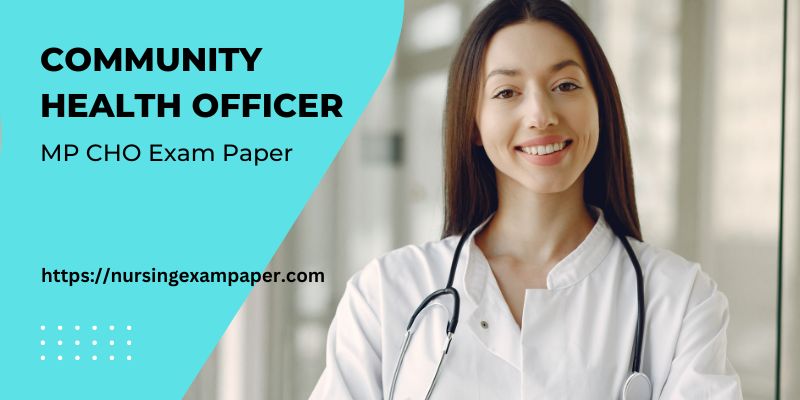
NHM MP CHO Previous Year Paper: Download Free PDF.
Aspirants who are hoping to do well in the NHM CHO exam must go through the NHM CHO previous year’s papers. Because there is no more useful resource than the previous year’s question papers to get familiar with the exam pattern and marking scheme.
First-time candidates will get an understanding of the format, difficulty level, and types of questions expected. Candidates can prepare for the NHM Rajasthan CHO exam mentally by practicing with NHM MP CHO’s previous year’s papers.
You can also download the PDF of NHM MP CHO Previous Year Question Papers and Answer Keys.
CHO Previous Year Question Paper with Answer
1. The anatomical term for the “breastbone” is
A. Sacrum
B. Sternum ✅
C. Patella
D. Clavicle
2. the National Strategic Plan aims to eliminate tuberculosis by
A. 2025 ✅
B. 2030
C. 2035
D. 2040
3. The lowest layer of the atmosphere is
A. Stratosphere
B. Troposphere ✅
C. Mesosphere
D. Ionosphere
4. Which is the largest nerve in the body
A. Sciatic ✅
B. Peroneal
C. Pudendal
D. Tibial
5. The part of the brain which controls body temperature is
A. Thalamus
B. Hypothalamus ✅
C. Pons
D. Medulla oblongata
6. Glucocorticoids and mineralocorticoids are secreted by
A. Pancreas
B. Gonads
C. Hypothalamus
D. Adrenal glands ✅
7. Substantia nigra secretes which of the following major neurotransmitters
A. Adrenalin
B. Dopamine ✅
C. Serotonin
D. Noradrenalin
8. The principal cells of the epidermis that produce keratin in a complex process are
A. Melanosomes
B. Keratinocytes ✅
C. Melanin
D. All of these
9. The total number of bones found in the right upper limb is
A. 25
B. 30 ✅
C. 40
D. 60
10. In the following which are both endocrine and exocrine glands
A. Pituitary
B. Thyroid
C. Pancreas ✅
D. Adrenal
11. The exchange of gas in the lungs takes place by (cho previous year question paper)
A. Bronchioles
B. Alveoli ✅
C. Trachea
D. Bronchus
12. The function of cerumen (wax) is
A. Protect the ear
B. Help clean ear canal of foreign matter
C. Protect ear canal from water damage
D. All of these ✅
13. The causes of the high birth rate in India are all of the following except
A. Early marriage
B. Traditional customs and habits
C. High level of literacy ✅
D. Universality of marriage
14. A pictorial diagram of frequency distribution which consists of a series of blocks is called
A. Line Diagram
B. Pie chart
C. Histogram ✅
D. Frequency polygon
15. The increase in urban population is due to all of the following factors except
A. Employment opportunities
B. The attraction of better living conditions
C. Availability of social services
D. High mortality and morbidity ✅
16. The literacy rate taking into account the total population in the denominator is termed as
A. Effective literacy rate
B. Crude literacy rate ✅
C. Life expectancy rate
D. None of these
17. The number of new cases occurring in a defined population in a specified period of time is called
A. Prevalence
B. Incidence ✅
C. Secondary attack rate
D. Point prevalence rate
18. An epidemic usually affects a large proportion of the population, occurring over a wide geographic area such as a continent or world is called (cho exam paper)
A. Endemic
B. Sporadic
C. Pandemic ✅
D. Exotic
19. The ratio of the incidence of the disease among the exposed and the incidence among the non-exposed is called
A. Attributable risk
B. Relative risk ✅
C. Population-attributable risk
D. All of these
20. The main purpose of a vaccine vial monitor is to
A. Ensure safe transport
B. Prevent damage to vaccine
C. Ensure heat-damaged vaccines are not administered ✅
D. Easy administration
21. The time interval between invasion by an infectious agent and the appearance of the first sign and symptom of the disease is called
A. Serial interval
B. Incubation period ✅
C. Latent period
D. Communicable period
22. The person, animal, object, or substance from which an infectious agent passes or is disseminated to the host is called
A. Reservoir
B. Source ✅
C. Carrier
D. Latent infection (cho previous year question paper)
23. The changes that occur during the second trimester in the fetus are all of the following except
A. Fetal heart sound can be heard with a stethoscope
B. Skeleton is calcified
C. Eyes remain closed and body growth accelerates
D. Lightening occurs ✅
24. A woman’s serum and urine will test positive for HCG in all of the following conditions except
A. Pregnancy
B. Ectopic pregnancy
C. Vesicular mole
D. Post hysterectomy ✅
25. Transmission of maternal antibodies to the unborn child through the placenta is an example of
A. Active immunity
B. Passive immunity ✅
C. Humoral immunity
D. Herd immunity
26. Failure of descent of one or both testes at birth in the newborn is called
A. Phimosis
B. Hydrocele
C. Cryptorchidism ✅
D. All of these
27. Complications during pregnancy and childbirth can be prevented by
A. Skilled care at birth
B. Early detection of risk
C. Appropriate and timely management of obstetric complications
D. All of these ✅
28. White or yellowish-white secretions that last for 10 to 15 days after delivery is called
A. Lochia rubra
B. Lochia serosa
C. Lochia alba ✅
D. All of these
29. The main components of essential newborn care are the following except
A. Resuscitation of a newborn with hypoxia
B. Prevention of hypothermia
C. Prevention of infection
D. Prevention of behavioral problems ✅
30. Recommended volume expander for a neonate in shock is
A. 5ml per kg of normal saline
B. 10ml per kg of normal saline ✅
C. 15ml per kg of normal saline
D. 20ml per kg of normal saline
31. The diagnostic techniques used to detect congenital anomalies in utero is
A. Alpha-fetoprotein
B. Amniocentesis
C. Chorionic villi sampling
D. All of these ✅
32. The minimum interval between two doses of TT vaccine given to antenatal mother should be
A. 1 month ✅
B. 2 months
C. 3 months
D. 4 months
33. Babies who are at high risk of developing retinopathy of prematurity are
A. Preterm neonates ✅
B. Term neonates
C. Post-term neonates
D. All of these
34. Vitamin A supplement is given under the reproductive and child health program for children up to the age of
A. 1 year
B. 3 year
C. 4 year
D. 5 year ✅
35. Measles mumps rubella vaccine has to be given
A. After birth
B. After 3 months
C. After 6 months
D. After 9 months ✅
36. At the health care facility, health workers can adequately protect vaccines by all the following measures except cho exam paper
A. Keep vaccines in appropriate vaccine refrigeration equipment
B. Use of temperature monitoring device
C. Transport vaccines in a vaccine carrier
D. Store vaccines in the door of the refrigerator only ✅
37. The route of administration of the Salk polio vaccine is
A. Oral
B. Intramuscular ✅
C. Intravenous
D. All of these
38. The vaccine for yellow fever is
A. Salk vaccine
B. 17 D vaccine ✅
C. CCEEV vaccine
D. PrEP vaccine
39. The following Vaccination is included in the national Immunization program
A. Vitamin A ✅
B. Vitamin B complex
C. Vitamin D
D. None of these
40. The Target groups of Weekly Iron Folic acid Supplementation (WIFS) are
A. Schoolgoing adolescent girls and boys in 6th to 10th class
B. Schoolgoing adolescent girls and boys in 10th to 12th class
C. Schoolgoing adolescent girls and boys in 8th to 12th class
D. Schoolgoing adolescent girls and boys in 6th to 12th class ✅
41. The components of adolescent health programs are all except
A. Weekly iron and folic acid supplementation
B. Adolescent reproductive and sexual health program
C. Menstrual hygiene scheme
D. Vitamin A supplementation program ✅
42. What is the first sign of puberty in females?
A. Voice changes
B. Axillary hair
C. Breast development ✅
D. Menarche
43. The dosage of Tab. Albendazole administered to prevent helminths instation in adolescents is
A. 200 mg
B. 400 mg ✅
C. 500 mg
D. 600 mg
44. The menstrual Hygiene Scheme (MHS) was implemented for adolescent girls in the age group of
A. 10‐ 22 years
B. 10‐ 19 years ✅
C. 16‐ 19 years
D. 15‐ 19 years
45. Bacteriologically confirmed or clinically diagnosed case of tuberculosis involving pleura, lymph nodes, abdomen, and Genito urinary tract is called (cho previous year question paper)
A. Pulmonary tuberculosis
B. Extra pulmonary tuberculosis ✅
C. HIV-positive tuberculosis
D. HIV-negative tuberculosis
46. All of the following infections are transmitted by fecal-oral route except
A. Hepatitis A
B. Hepatitis B ✅
C. Diarrhea
D. Poliomyelitis
47. The illness caused by a mosquito bite are all of the following except
A. Lymphatic filariasis
B. Malaria
C. Dengue
D. SARS ✅
48. Chikungunya virus is transmitted to people through
A. Pigs
B. Mosquito bites ✅
C. Chicken
D. Birds
49. A hepatitis D infection occurs only when the person is positive for
Hepatitis A
Hepatitis B ✅
Hepatitis C
Hepatitis E
50. The infectious disease caused by the variola virus is
A. Chickenpox
B. Smallpox ✅
C. Measles
D. Rubella
51. It involves the usage of manual communication and body language to convey meaning as opposed to acoustically conveyed sound patterns.
A. Lip-reading
B. Sign language ✅
C. Human aids
D. Technological aids
52. The unique advantage of organizational communication compared to small-group communication is that
A. Feedback is easier and more immediate
B. Communication roles are more formal ✅
C. Always Informal communication takes place.
D. All of these
53. The nurse is aware that an adaptation of pregnancy is increased blood supply to the pelvic region that results in purplish discoloration of vaginal mucosa known as (cho exam paper)
A. Ladin’s sign
B. Hegar’s sign
C. Goodell’s sign
D. Chadwick sign ✅
54. SUMAN initiative is covered under which ministry
A. Ministry of Human Resource Development
B. Ministry of Women and Child Development
C. Ministry of Health & Family Welfare ✅
D. Ministry of education
55. World immunization week is celebrated in the
A. Last week of April ✅
B. Last week of June
C. Last week of May
D. None of these
56. Which of the following best explains how cigarettes cause lung cancer?
A. Smoking cigarettes transfer viruses that cause cancers
B. Cigarettes contain nicotine
C. Cigarette smoke contains chemical carcinogens ✅
D. None of these
57. In a communication process, noise belongs to which type of barrier to communication
A. Physical ✅
B. Physiological
C. Psychological
D. None of these
58. The response received to a senders message is called as
A. Answer
B. Feedback ✅
C. Foodbank
D. Encoding
59. FP‐ LMIS stands for (cho previous year question paper)
A. Family Planning Logistics Management Information System ✅
B. Family Planner Logistics Management Information System
C. Family Planning Logistics Management Information Services
D. None of these
60. The mode of transmission of chicken pox is
A. Droplet nuclei ✅
B. Infected blood
C. Mosquito
D. Rodents
61. All of the following are different forms of diphtheria except
A. Nasal diphtheria
B. Laryngotracheal diphtheria
C. Cutaneous diphtheria
D. Systemic diphtheria ✅
62. The most effective drug used to treat carriers of diphtheria is
A. Azithromycin
B. Erythromycin ✅
C. Doxycycline
D. Tetracycline
63. Pertussis is also known as
A. Enteric Fever
B. Whooping cough ✅
C. German measles
D. Rubella
64. Which of the following disease condition is a major cause of mitral insufficiency and stenosis?
A. Diarrhea
B. Rheumatic fever ✅
C. Typhoid
D. Malaria
65. When the causes of hypertension are unknown it is called (cho questions)
A. Primary hypertension ✅
B. Secondary hypertension
C. Isolated systolic hypertension
D. All of these
66. The lifestyle that has a greater risk of developing coronary heart disease is
A. Active lifestyle
B. Sedentary lifestyle ✅
C. Active exercises
D. None of these
67. The regular monitoring of blood pressure is under which level of prevention?
A. Primordial
B. Primary
C. Secondary ✅
D. Tertiary
68. Which is the following is not a risk factor for the development of diabetes mellitus?
A. Sedentary lifestyle
B. Protein-energy malnutrition in infancy
C. Excessive intake of alcohol
D. High intake of Vitamin –A ✅
69. National Programme, NPCDCS includes
A. Cancer, Hepatitis, Cardiovascular & Diabetes
B. Cancer, Diabetes, Cardiovascular & strokes ✅
C. Cancer, Leprosy, Diabetes & Tuberculosis
D. None of these
70. Which of the following is a major cause of type 2 diabetes?
A. Too little sugar in the diet, lowers blood sugar
B. Obesity ✅
C. Too vigorous exercise, causes a reduction in carbohydrates in the body
D. None of these
71. Oral hypoglycemic agents may be used to treat patients with
A. Ketosis
B. Obesity
C. Dengue
D. Type 2 diabetes ✅
72. The diseases covered by the National vector-borne disease control program are all of the following except (cho questions)
A. Tuberculosis ✅
B. Malaria
C. Filariasis
D. Kala-azar
73. The major initiatives taken under the national leprosy eradication program is
A. Dressing materials and supportive medicines are given to leprosy-affected persons
B. Micro-cellular rubber footwear is provided to protect insensitive feet
C. Rs. 5000 is provided for persons undergoing reconstructive surgery
D. All of these ✅
74. The program that aimed to train health personnel in basic newborn care and resuscitation is
A. Rashtriya Bal Swasthya Karyakram
B. Navjat Shishu Suraksha Kaaryakram ✅
C. IMNCI
D. Home-based newborn care
75. What is the proposed timeline for the registration of mothers according to the micro birth plan of Janani Suraksha Yojana (JSY)?
A. At least 14‐18 weeks before the expected date of delivery
B. At least 20‐24 weeks before the expected date of delivery. ✅
C. At least 12‐ 16 weeks before the expected date of delivery
D. At least 8 to 12 weeks before the expected date of delivery
76. Which of the following can volunteer themselves under the Vande Mataram Scheme for providing safe motherhood services?
A. ANM
B. ASHA
C. Community health nurse
D. Obstetric and Gynaecologist Specialist Doctor ✅
77. The National Adolescent Health Programme was launched in the year of
A. 2014 ✅
B. 2008
C. 2012
D. 2010
78. Rashtriya Kishore Swaasthya Karyakram (RKSK) has the following six priority areas except
A. Improve Nutrition
B. Enable sexual and reproductive health
C. Address conditions for Communicable diseases ✅
D. Prevent injuries and violence
79. Which state is called the land of five rivers
A. Gujarat
B. Tamilnadu
C. Punjab ✅
D. Kerala
80. World health day is celebrated on (cho questions previous year)
A. March 7
B. April 7 ✅
C. April 10
D. April 14
81. The state in which the famous Ajanta caves are situated in
A. Madhya Pradesh
B. Maharashtra ✅
C. Gujarat
D. Kerala
82. Which is the most popular classical dance form in Andhra Pradesh?
A. Bharathanatiyam
B. Kathak
C. Kuchipudi ✅
D. Mohiniyattam
83. A postpartum woman should be instructed to perform the Kegel exercise for which of the following purpose (cho previous year question paper)
A. To promote uterine involution
B. To prevent urinary tract infection
C. To strengthen pelvic ligaments
D. To strengthen the pelvic floor muscles ✅
84. A primigravida mother delivered a male baby. The newborn has visible secretions after birth. The nurse has to suction the newborn in which of the following method
A. Nose first followed by mouth
B. Mouth first followed by a nose ✅
C. Mouth only
D. Nose only
85. To perform nasopharyngeal airway suctioning for a conscious patient with a functional gag, the nurse should place the patient’s head in which of the following positions
A. Chin flexed to chest
B. Face towards the right shoulder
C. Face towards the left shoulder
D. Neck hyperextended ✅
86. While administering the enema patient should be placed in
A. Sims position ✅
B. Supine position
C. Mid-Fowlers position
D. Knee chest position
87. Facility-based counseling centers provide health education to adolescents in all of the following areas except (cho questions)
A. Nutrition
B. Puberty
C. Prevention of STD
D. Early marriage and childbearing ✅
88. A nurse working with adolescents in juvenile homes discusses the developmental task appropriate for adolescents with the caretaker. An example of a primary developmental task of an adolescent is
A. Working hard to succeed in studies
B. Accepting the decision of authorities
C. Developing athletic activities and skills
D. Spending time developing relationships with peers ✅
89. Which position is demonstrated here?
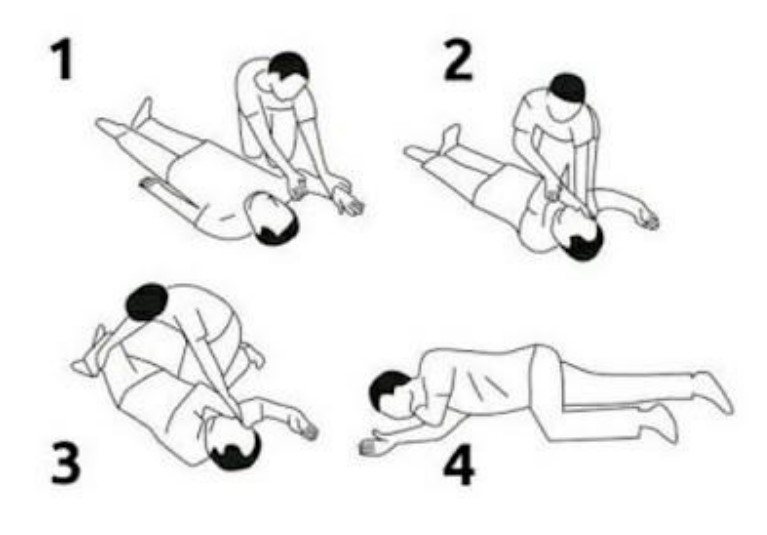
A. Recovery position ✅
B. Sims lateral position
C. Dorsal recumbent position
D. Knee chest position
90. Identify this instrument.
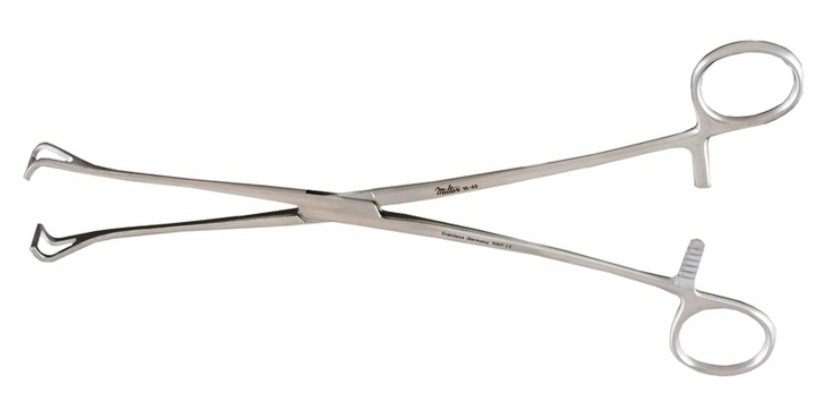
A. Artery forceps
B. Allis forceps
C. Green Armitage
D. Babcock forceps ✅
91. Identify these instruments.
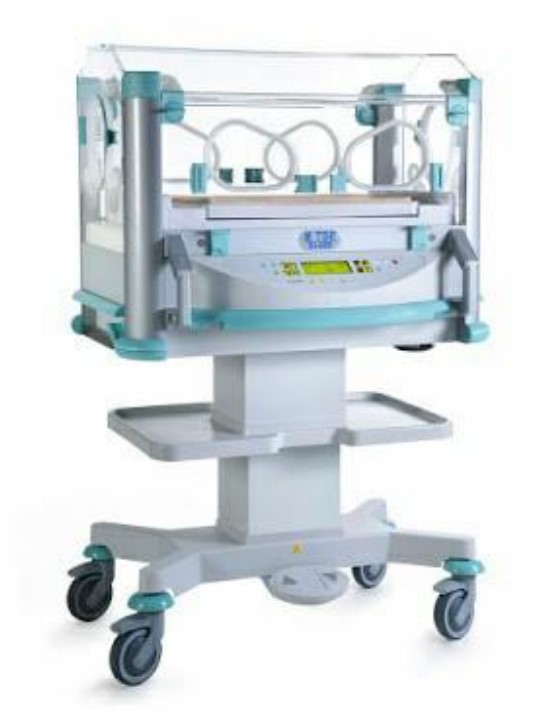
A. Dialysis machine
B. Mechanical ventilator
C. Portable ventilator
D. Infant incubator ✅
92. Which one is more appropriate for preventing Acute Diarrhoeal Disease?
A. Maintaining good personal hygiene
B. Maintaining good food hygiene
C. Maintaining good environmental hygiene
D. All of these ✅
93. What is the characteristic feature of Vitamin‐A deficiency?
A. Bitot’s spot ✅
B. Koplik’s spot
C. Café‐au‐lait spot
D. Target spot disease
94. Foams, creams, and jellies are which methods of contraception
A. Physical method
B. Natural method
C. Chemical method ✅
D. Intrauterine devices
95. The objectives of family planning are all of the following except
A. To bring about wanted births
B. To regulate the number of children in the family
C. To minimize the interval between pregnancies ✅
D. To avoid unwanted births
96. Which of the following is a terminal method of contraception
A. Birth vaccine
B. Vasectomy ✅
C. Subdermal implants
D. Combined pills
97. Preventive methods to help women avoid unwanted pregnancies are called
A. Family planning
B. Contraceptive methods ✅
C. Small family norm
D. Couple protection
98. When diarrhea lasts for more than 14 days it is called (CHO questions)
A. Dysentery
B. Acute watery diarrhea
C. Persistent diarrhea ✅
D. All of these
99. Which of the following National programs were implemented through the Department of Parasitic Diseases of NCDC?
A. Guinea Worm Eradication Programme ✅
B. National Rabies Control Programme
C. Guinea Worm Eradication Programme and National Rabies Control Programme
D. Program for Prevention and Control of Leptospirosis
100. It is the ability to make logical, rational decisions and decide whether a given action is right or wrong.
A. Judgment ✅
B. Controlling
C. Creativity
D. Interpretation
UP NHM CHO Question Paper Answer Key
Railway Nursing Exam Paper 2019 pdf
Railway Staff Nurse Question Paper 2019
Senior Nursing Officer Exam Question Paper 2018
RRB Question Paper Previous Year
CHO Previous Year Question Paper, CHO Previous Year Question Paper, CHO Previous Year Question Paper, CHO Previous Year Question Paper, CHO Previous Year Question Paper, CHO Previous Year Question Paper, CHO Previous Year Question Paper, CHO Previous Year Question Paper, CHO Previous Year Question Paper, CHO Previous Year Question Paper, CHO Previous Year Question Paper, CHO Previous Year Question Paper, CHO Previous Year Question Paper, CHO Previous Year Question Paper, CHO Previous Year Question Paper, CHO Previous Year Question Paper
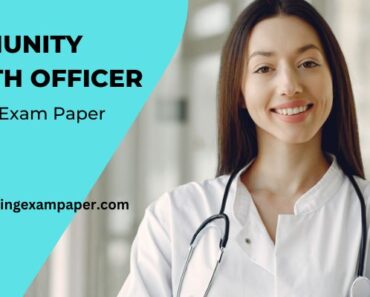
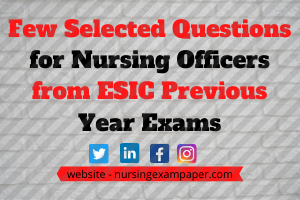
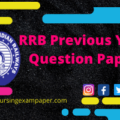

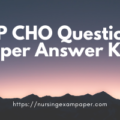
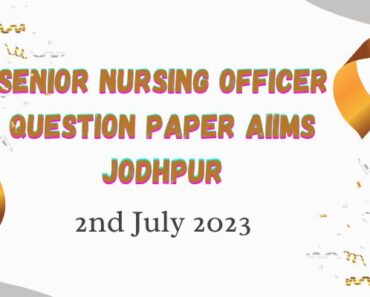
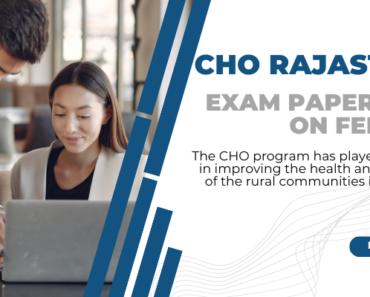

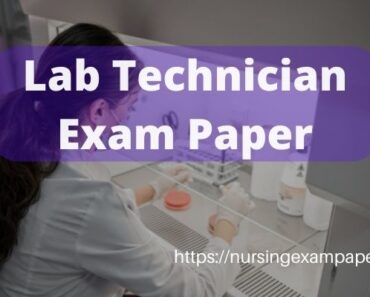
EXCELLANT CLASSES